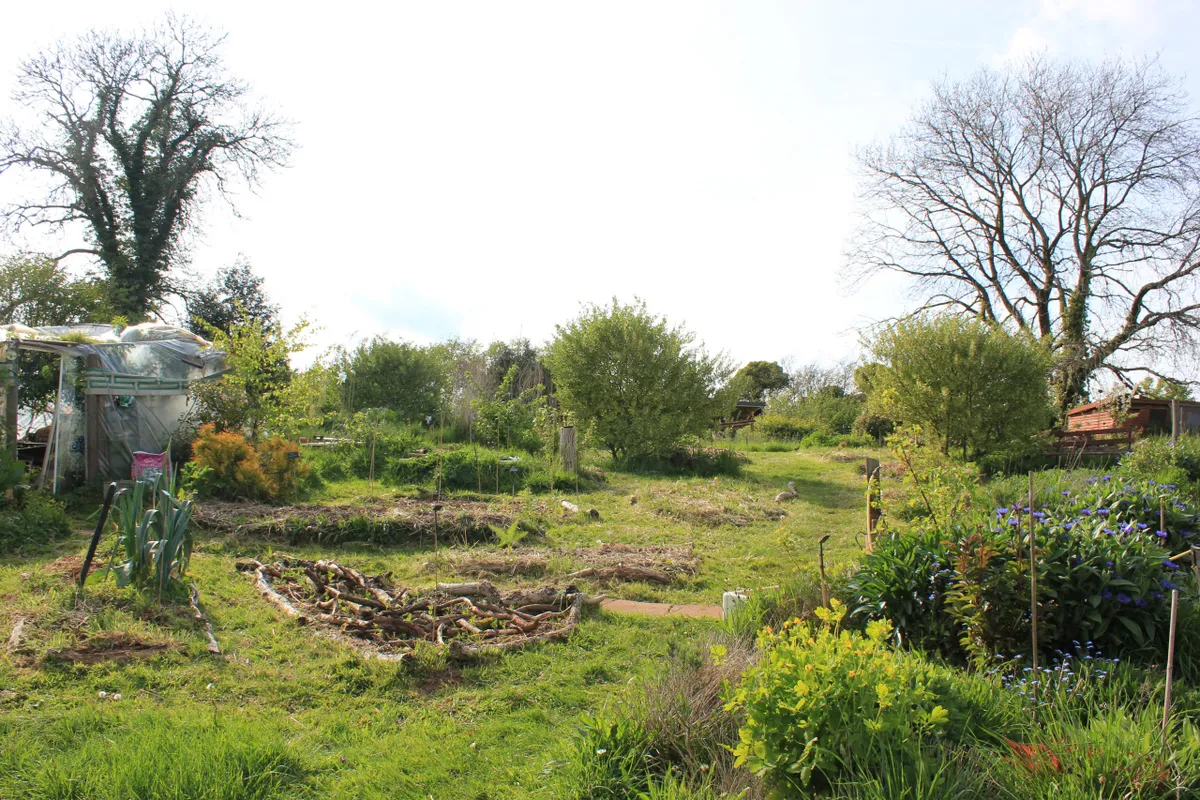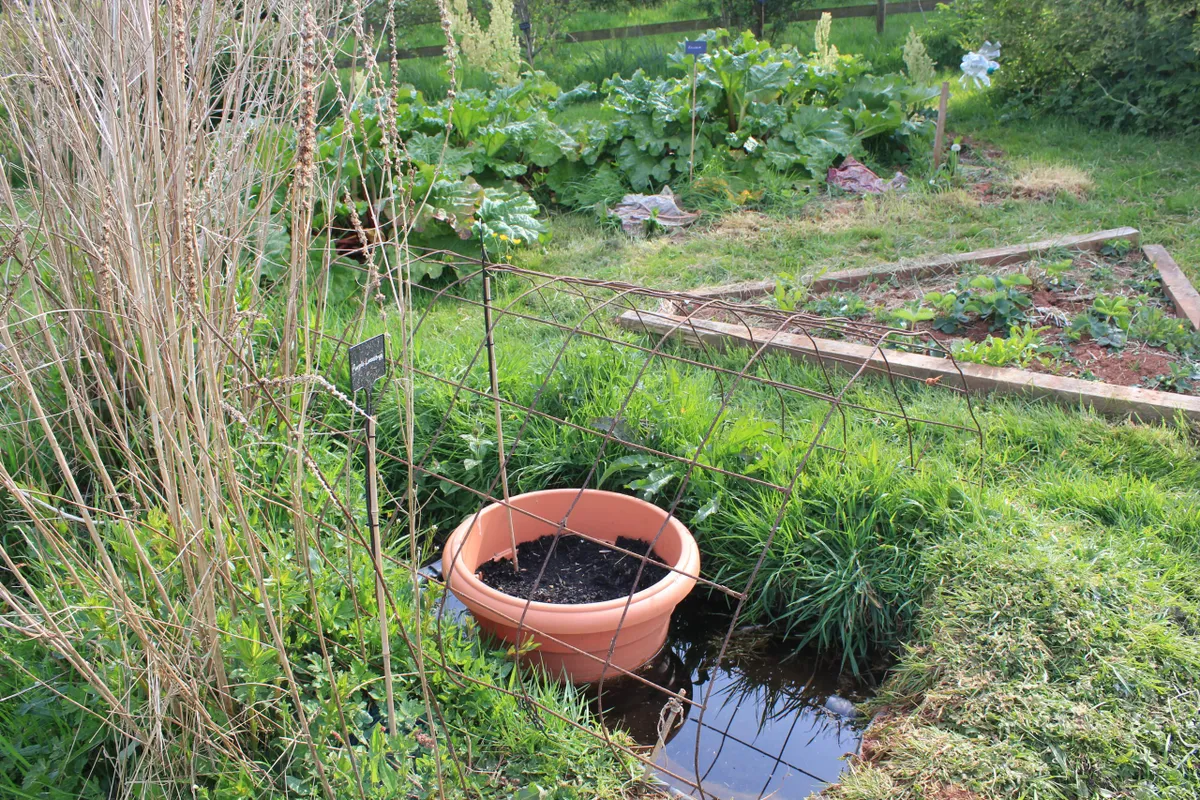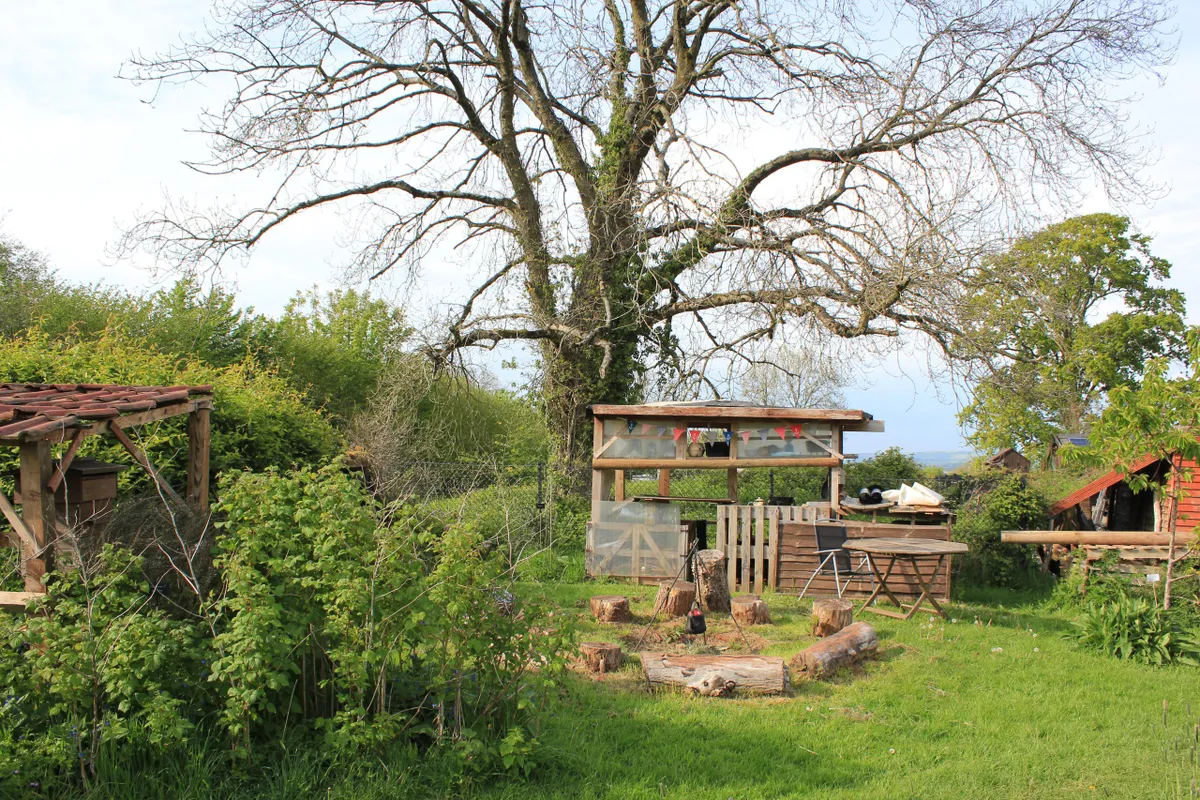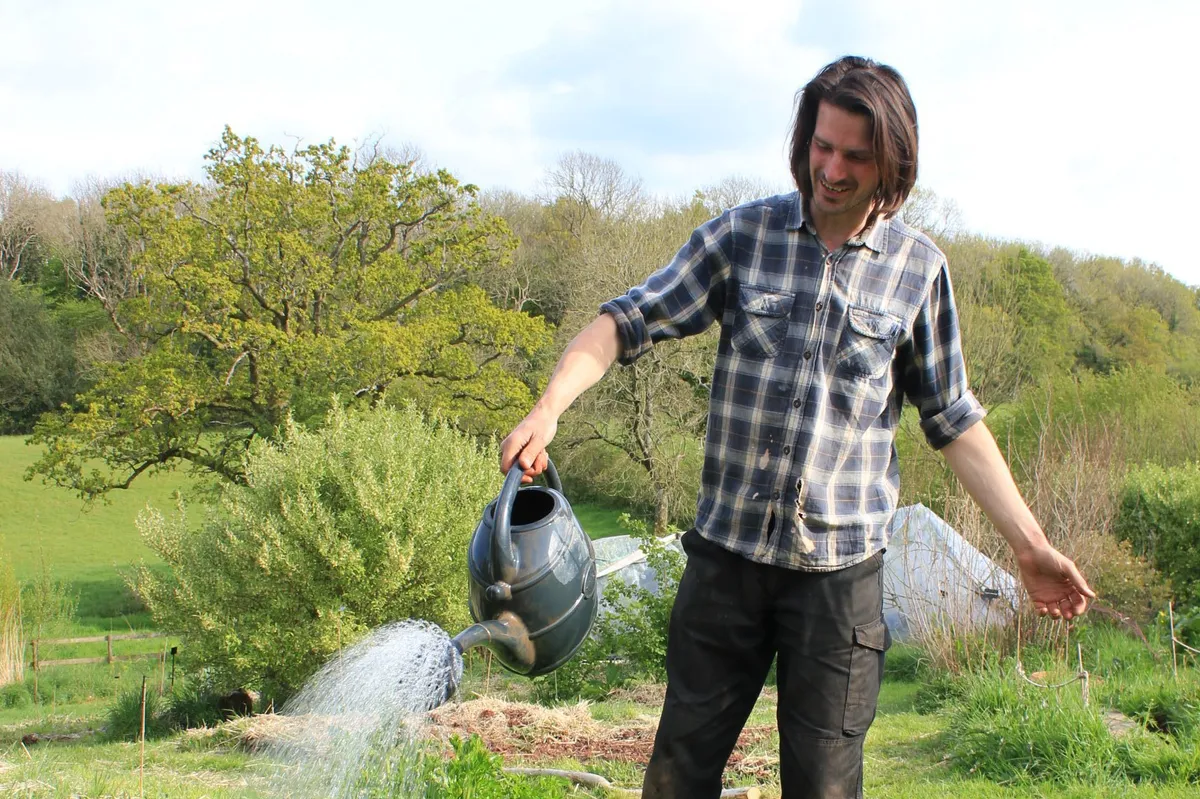When I began creating my forest garden there were no trees, only a grass pasture with a few kinds of wildflowers. I spent the first year rabbit proofing the site and walking around every day to assess the land. Where the shadows fell, where the rain naturally pooled and flowed, where the frost pockets were and which direction the wind most blew from. I also marked out where the flowers were that I wanted to keep. These areas are now dedicated wildflower meadow areas, that probably takes the most maintenance by having to annually artificially graze by either scything or strimming.
I wanted to explore, experiment and ultimately demonstrate the optimum way of using a hectare of land. And I’m beginning to get there! A hectare (approximately 2.5 acres) of forest garden can provide enough food for ten people all year round whilst simultaneously creating an abundance of food and habitat for a plethora of wildlife whilst restoring the environment and sequestering carbon.

In year one I started with only one book: Creating a Forest Garden by Martin Crawford. I walked around the site sticking bamboo canes with plastic labels on in the ground. Then as I worked about the various needs, conditions and symbiotic relationships between each plant, I repositioned the canes accordingly. By planning so meticulously I’ve seldom had to move anything. Though as many of you gardeners will have realised, many plants move to somewhere more favourable all by themselves.
The thing I'm most proud of with the forest garden is the vast increase in biodiversity since beginning the project. It was pretty much a grassy field when I started with the occasional fox or rabbit passing through. Now, however, there are owls, grass snakes, slow worms, too many other birds to mention. The meadow areas are buzzing with insect life during the summer months and there's a very healthy honeybee population now too. I've ten hives on-site, four of which are occupied at present. All this and I’ve not even planted half of it yet.

What is a forest garden?
A forest garden, sometimes called agroforestry, is a multi-storey, very low maintenance, self-sustaining eco-system of useful and edible plants. It’s not just gardening in a forest.
The principles include using plants that are directly useful, including many types of fruit trees, both the common ones and much less common fruit trees, all the types of nuts, tuber crops, vegetables, medicinal plants, timber but also logs that you might grow other things on like mushrooms. All planted in a way that mimics a natural woodland.
There are also plants of indirect use, system plants, to help the system function better. And that includes nitrogen-fixing plants, mineral accumulators, plants to attract beneficial insects to eat all your pests. The idea is that it becomes a low maintenance self-sustaining miniature ecosystem.
How much space does a forest garden need?
You don't have to have a whole field to practice forest gardening. You can use the forest garden principals on a 3-foot balcony or 20-foot square allotment! Just grow what you can, wherever you can. If you can plant trees then all the better. It's amazing how quickly they grow too. I climbed a tree that I planted after a mere five years. The youngest tree here is three and already extremely productive.

How long does it take to plant a forest garden?
That depends on what your budget is, what the soil is like and how much help you have. I’ve created this project by myself with a budget of £1000 and so it’s taken many years. If I’d had ten times that, plus a team of people then it could have all been planted in one season. Though it still would have taken a few years to mature. I’m glad of the way I am approaching it though as by nurturing the various trees and plants from seeds or cuttings and observing them as they grow, I’ve learned a lot more than I would have if I’d simply stuck a full sized specimen in the ground and forgotten about it, or if someone else had done it for me.
Five plants from a forest garden
With the exception of perhaps thirty or forty species, nothing growing here is particularly unusual, it’s just unusual to find it all growing in one place.
1
Raspberries
Many keen gardeners think I'm radical for simply leaving the canes alone and doing nothing. They're doing incredibly well as a result. I eat fresh raspberries from May until December. I let them do what raspberries naturally do. They eventually die off in one place, leaving the ground to recover and let other species move in, then sucker up in another. I don't weed around them. In fact letting the grass and other 'weeds' (the diversity of plants at their base is huge by the way) sprout up around them supports them whilst hiding many of the berries from the birds. Many a mouse nest is harboured at their base subsequently creating prime hunting ground for a resident tawny and barn owl. All because I don't do anything!
2
Tree collard (Brassica oleracea var. acephala)
Highly nutritious, resistant to slug attack, hardy, fast-growing, and truly maintenance-free. Plus its leaves can be harvested throughout any season of the year. It’s an excellent companion for most vegetables, except strawberries, tomatoes and certain types of bean. In good soil, they can grow up to 2 meters high within a year, and live for up to 20 years.
3
Chinese Cedar / Toon (Toona Sinensis)
Used as a staple vegetable throughout many parts of China. The leaves by themselves have a smokey/meaty kind of taste but are a powerful flavour enhancer. I add a handful of leaves to anything savoury I'm cooking to bring together the tastes of the other ingredients. I've renamed it 'The Veggie Stock Cube tree’ and I use it all the time!
4
Adam's Flannel (Vebascum thapsus)
This is always one that gets people talking! Also known as Wild Verbascum or Great Mullein etc. It's native to the UK and has an illustrious history of medicinal uses but I'm growing it to use instead of toilet paper. With its big, soft absorbent leaves it really is the Andrex of the plant world! You've just got to remember to rub the right way or it may cause a rash, which is probably where it gets another of its myriad names, Quakers' Rouge. Quaker women were famously forbidden to wear makeup to rubbing this (the incorrect direction) on their (facial) cheeks, caused a 'healthy' red glow!
5
Arrowhead / Katniss or 'Swamp potatoes' (Sagittaria sagittifolia)
These are quite unusual too. I grow then in various aquatic environments, bathtubs and ponds under a layer of watercress. They’re great fun to harvest with your toes from the squishy-squashy sediment at the bottom of the pond Another of their names is duck potatoes, I leaned why the hard way. The ducks absolutely love them.
How much regular maintenance does a forest garden take?
Eventually, surprisingly little. Perhaps just one or two days ‘tweaking’ per month. And if it were left for ten or twenty years then it would not take longer than a few days to bring it back into balance. A forest garden is a well balanced system, designed to closely mimic the perfect, natural balance of a native woodland which takes care of itself completely, but with the emphasis on producing food for people. Though it provides more than enough for all the wildlife too!
My garden hasn’t quite reached this stage yet so it does require a bit more maintenance than that, for the moment at least. Until recently I had to mow the quarter of an acre of grass access paths and clearings every couple of weeks with a petrol push mower. However my four young geese are now diligently doing that for me. Though they do have a tendency to mow more than just the grass sometimes.
My real secret weapon though are wood chips. A forest garden will eventually be a totally self fertile ‘closed loop’, but in the meantime I mulch mulch mulch. Not only does this build the soil as it decomposes but by mulching with a good six inch layer of wood chips around every new tree or plant there’s no need to keep it watered.

By mulching before the winter rains the soil stays moist well into the next summer by which time the plant will have had the chance to significantly strengthen its root system to thrive by itself. The wood chips also suppress the grass and other weeds so by the time the plant or tree suckers or seeds there’s a fresh fertile surface all around it to help it to spread unassisted. Many allotment gardeners of annual veg advise against this method as the wood chip leaches nitrogen from the soil as is decomposes. That’s true, it does. But over time it puts back far more than it takes and so isn’t a problem for the deeper rooted perennial vegetables.
What are the biggest challenges of planting a forest garden?
The biggest challenge, besides finding the space to do it, is patience.
Rob Handy's forest garden is situated in the Mendip hills. Head to his site to book a tour and his YouTube channel for more on his work on the garden itself.